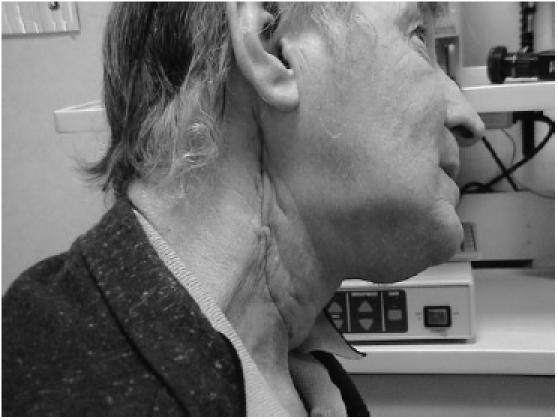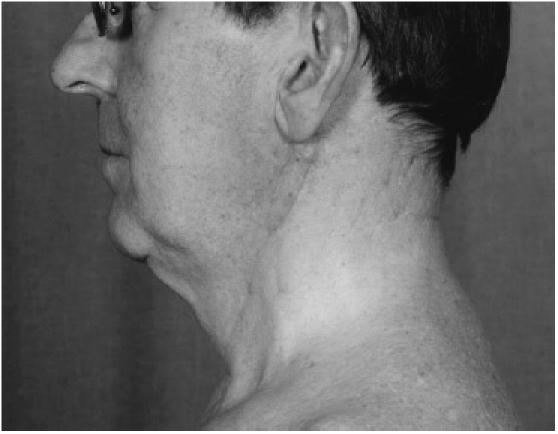BACKGROUND
Skin incisions in the neck, such as for thyroidectomy, have traditionally been closed with a variety of materials, ranging from clips to subcuticular sutures, either absorbable or non-absorbable. We propose the use of octyl-2-cyanoacrylate (Dermabond™, manufactured by Ethicon Inc., Ethicon Products, PO Box 151, Somerville, NJ 08876-0151, USA) as an effective method of skin closure with benefits for the surgeon, nursing staff and patient. Whilst Dermabond™ has found favour in the closure of small wounds, its use for larger incisions is less common.
TECHNIQUE
After adequate haemostasis, deep layers are closed as usual, with sutures to platysma routinely and deep dermal sutures only if the wound edges require approximating. The surgical field is cleaned and dried. Dermabond™ is applied along the wound, and forceps used to maintain skin edge eversion if necessary. Two further applications are made. No further dressing is required; after 3 min the glue is dry and fully waterproof.
DISCUSSION
Skin closure with sutures can be time-consuming, and removal can be distressing for the patient. Cosmetic outcome is variable, depending on the accuracy and tension of the closure. Dermabond™ is quick to apply and no foreign material is left within the skin. It is waterproof, allowing patients to shower from day one, and requires minimal input from nursing staff. A randomised, controlled trial of 111 patients showed Dermabond™ to have a superior cosmetic outcome at 1 year compared with sutures, with no increase in complications.1 A recent study looking at wounds greater then 4 cm found Dermabond™ provides equivalent wound closure to sutures, with a decreased incidence of wound infection.2 In our experience, both patients and nurses find this method of closure preferable to sutures, with good cosmetic results (Figs 1 and 2).
Figure 1.

Neck dissection: wound 2 weeks following closure with Dermabond™.
Figure 2.

Superficial parotidectomy: wound 3 months following closure with Dermabond™.
References
- 1.Toriumi DM, O'Grady K, Desai D, Bagal A. Use of octyl-2-cyanoacrylate for skin closure in facial plastic surgery. Plast Reconstr Surg. 1998;102:2209–19. doi: 10.1097/00006534-199811000-00062. [DOI] [PubMed] [Google Scholar]
- 2.Blondeel PN, Murphy JW, Debrosse D, Nix JC, 3rd, Puls LE, Theodore N, et al. Closure of long surgical incisions with a new formulation of 2-octylcyanoacry-late tissue adhesive versus commercially available methods. Am J Surg. 2004;188:307–13. doi: 10.1016/j.amjsurg.2004.04.006. [DOI] [PubMed] [Google Scholar]


